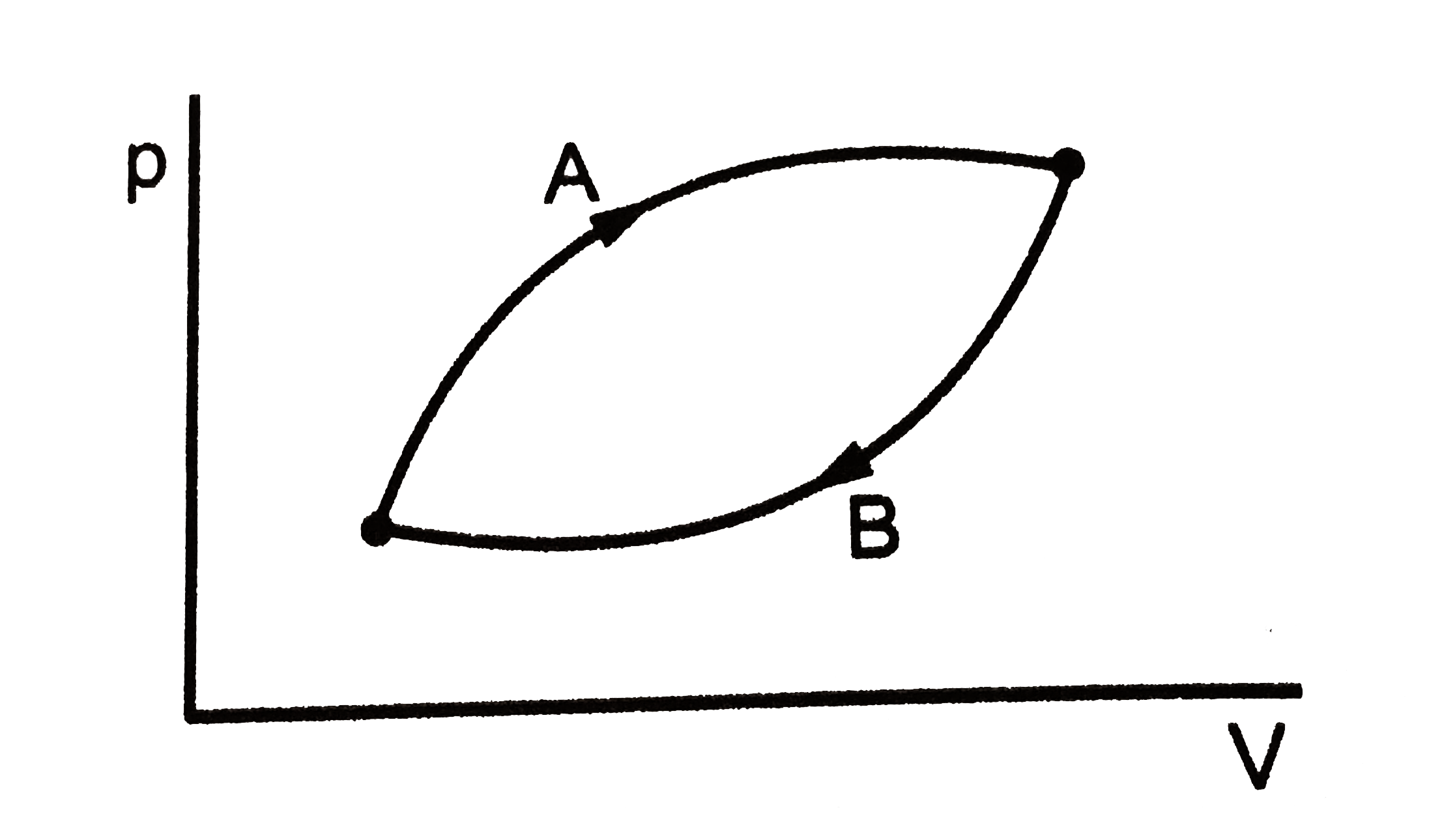Match the thermodynamic processes taking place in a system with the correct conditions. In the table : ΔQ is the heat supplied, ΔW is the work done and ΔU is change in internal energy of the system .
ProcessCondition(I)Adiabatic(A)ΔW=0(II)Isothermal(B)ΔQ=0(III)Isochoric(C)ΔU≠0 , ΔU≠0 , ΔQ≠0(IV)Isobaric(D)ΔU=0
(I) - (B), (II) - (A), (III) - (D), (IV) - (C )
(I) - (B), (II) - (D), (III) - (A), (IV) - (C )
(I) - (A), (II)- (A), (III) - (B), (IV) - (C )
(I) - (A), (II) - (B), (III) - (D), (IV) - (D)
To solve the problem of matching thermodynamic processes with their corresponding conditions, we will analyze each process one by one and determine the correct conditions based on the definitions of the processes.
1. Adiabatic Process (I):
- In an adiabatic process, there is no heat exchange with the surroundings. This means that the heat supplied, ΔQ, is equal to 0.
- Therefore, the correct condition for the adiabatic process is (B) ΔQ = 0.
2. Isothermal Process (II):
- In an isothermal process, the temperature remains constant throughout the process. For an ideal gas, this implies that the change in internal energy, ΔU, is also 0 because ΔU is dependent on the change in temperature.
- Thus, the correct condition for the isothermal process is (D) ΔU = 0.
3. Isochoric Process (III):
- An isochoric process is characterized by a constant volume. Since the volume does not change, the work done, ΔW, is 0 (as work done is related to volume change).
- Therefore, the correct condition for the isochoric process is (A) ΔW = 0.
4. Isobaric Process (IV):
- In an isobaric process, the pressure remains constant. There is no restriction on heat transfer or change in internal energy, so both ΔQ and ΔU can be non-zero.
- Thus, the correct condition for the isobaric process is (C) ΔU ≠ 0 and ΔQ ≠ 0.
Summary of Matches:
- I (Adiabatic) → (B) ΔQ = 0
- II (Isothermal) → (D) ΔU = 0
- III (Isochoric) → (A) ΔW = 0
- IV (Isobaric) → (C) ΔU ≠ 0 and ΔQ ≠ 0
Final Matching:
- I - B
- II - D
- III - A
- IV - C
- In an adiabatic process, there is no heat exchange with the surroundings. This means that the heat supplied, ΔQ, is equal to 0.
- Therefore, the correct condition for the adiabatic process is (B) ΔQ = 0.
- In an isothermal process, the temperature remains constant throughout the process. For an ideal gas, this implies that the change in internal energy, ΔU, is also 0 because ΔU is dependent on the change in temperature.
- Thus, the correct condition for the isothermal process is (D) ΔU = 0.
- An isochoric process is characterized by a constant volume. Since the volume does not change, the work done, ΔW, is 0 (as work done is related to volume change).
- Therefore, the correct condition for the isochoric process is (A) ΔW = 0.
- In an isobaric process, the pressure remains constant. There is no restriction on heat transfer or change in internal energy, so both ΔQ and ΔU can be non-zero.
- Thus, the correct condition for the isobaric process is (C) ΔU ≠ 0 and ΔQ ≠ 0.
- I (Adiabatic) → (B) ΔQ = 0
- II (Isothermal) → (D) ΔU = 0
- III (Isochoric) → (A) ΔW = 0
- IV (Isobaric) → (C) ΔU ≠ 0 and ΔQ ≠ 0
- I - B
- II - D
- III - A
- IV - C
Topper's Solved these Questions
Similar Questions
Knowledge Check
Match the column :-
Column - IColumn - IIAAdiabatic processPq=0BIsothermal processQΔH=0CIsoenthalpic processRΔT=0DIsoentropic processSΔS=0AA→P,B→S,C→Q,D→RBA→Q,B→P,C→S,D→RCA→P,B→R,C→Q,D→SDA→P,B→R,C→S,D→QRefer to let ΔU1 and ΔU2 be the changes in internal energy in the system in process A+B and ΔW be the net work done by the system in the process A+B,
 AΔU1+ΔU2=0.BΔU1−ΔU2=0CΔQ−ΔW=0.DΔQ+ΔW=0.
AΔU1+ΔU2=0.BΔU1−ΔU2=0CΔQ−ΔW=0.DΔQ+ΔW=0.In the diagram, the graph between volume and pressure for a thermodynamical process in shown. If UA=0,UB=20J and the energy given from B to C is 30J, then at the stage of C, the internal energy of the system is –
 A50 jB60 jC30 jD10 j
A50 jB60 jC30 jD10 j
Match Column I with Column II.
Column I Column II(i)Equilibrium(a)ΔG>0,K<1(ii)Spontaneous reaction(b)ΔG=0(iii)Non-spontaneous reaction(c)ΔGΘ=0(d)ΔG<0,K>1
View SolutionFor a cyclic process,the condition is (A) ΔU=0 only (B) ΔH=0 only (C) ΔU>0 and ΔH>0 (D) both ΔU=0 and ΔH=0
View SolutionIf ΔU and ΔW represent the increase in internal energy and work done by the system resectively in a thermodynamical process, which of the following is true?
View SolutionThermodynamic processes are indicated in the following diagrams

Match the following
Column - IColumn -IIPProcess IaAdiabaticQProcess IIbIsobaricRProcess IIIcIsochoricSProcess IVdIsothermal
View SolutionIn given figure, let ΔU1 and ΔU2 be change in internal energy in process ABC and CDA respectively. ΔQ and W be the net heta given and net work done by the system in the process ABC+CDA, then

View Solution
